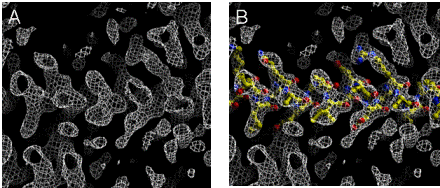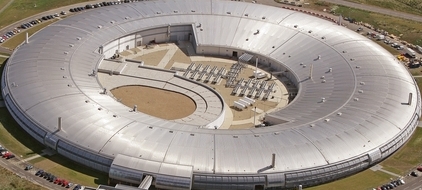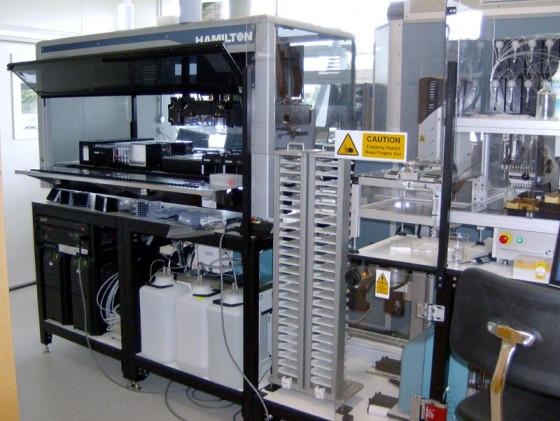

Cystallisation robot: preparing 2000 experiments in less than three hours.

Bibliography
1. Stryer, L, Berg, J. M. and Tymoczko, J. L., Biochemistry, 5th edition, 1995, Publisher: W.H. Freeman & Company; 5th edition.
2. Alberts, B., Johnson, A., Lewis, J., Raff, M., Roberts, K, and Walter, P., Molecular Biology of the Cell, Chapters 3 - 6, Garland Science, Taylor Francis Group.
3. Branden, C. and Tooze, J., Introduction to Protein Structure, Second edition, 1999, Publishers, Garland Science, Taylor Francis Group.
4. Rhodes, G., Crystallogrpahy made crystal clear, 2nd Edition, 2000, Publishers: Academic Press.
5. Glusker J., and Trueblood, K., Crystal structure analysis, 2nd Edition, 1985, Publishers: Academic Press.
6. Bergfors, T., Protein Crystallisation, Second Edition, 2009, Publishers: International University Line.
7. Iwata, S., Methods and Results in Crystallisation of Membrane Proteins, 2003, International University Line.
8. Weyand S, Shimamura T, Yajima S, Suzuki S, Mirza O, Krusong K, Carpenter EP, Rutherford NG, Hadden JM, O'Reilly J, et al.: Structure and molecular mechanism of a nucleobase-cation-symport-1 family transporter. Science 2008, 322:709-713
9. Carpenter, E.P., Beis, K., Cameron, A.D., Iwata, S., Overcoming the challenges of membrane protein crystallography, 2008, Current Opinion in Structural Biology 2008,
18: 581-586.
Liz Carpenter is a research fellow at Imperial College, London and a group leader in the Membrane Protein Laboratory at Diamond. So Iwata,
who holds the David Blow chair of biophysics at Imperial College, London, directs the laboratory. The group has solved 12 of the total of
170 known membrane protein structures. The research team also trains membrane protein scientists who want to learn about crystallography and crystallographers who want
to learn about working with membrane proteins. Some 25 research groups in Europe use the laboratory, which is a collaboration including Imperial College, the Wellcome Trust
and Diamond Light Source Ltd. For more about the team visit http://www.diamond.ac.uk/Science/MPL/aboutus.html
Words Liz Carpenter© Pictures provided by Liz Carpenter. Design Helen Gavaghan©.
Editing and production, Helen Gavaghan. B.Sc (hons). Biophysics, University of Leeds, 1980.
Science, People & Politics ©All rights reserved
W3 School Internationalisation validator.
Click here to check HTML.
Click here for CSS checker.
|
|
|
|